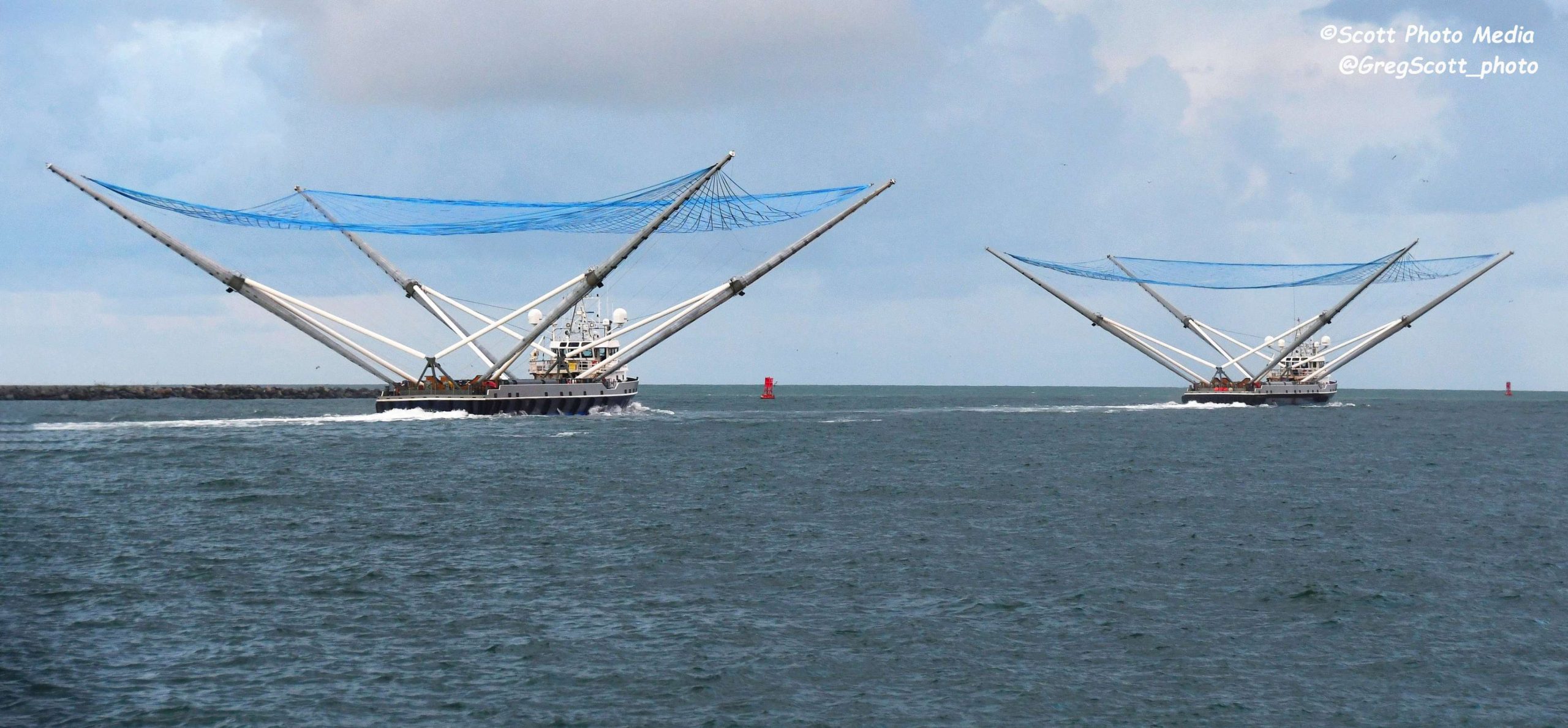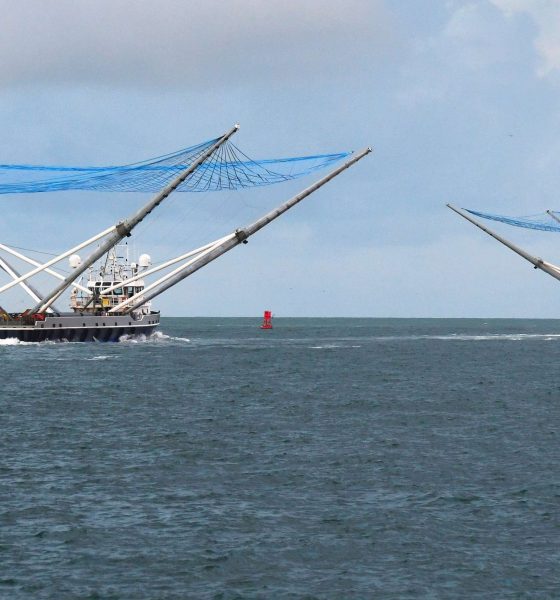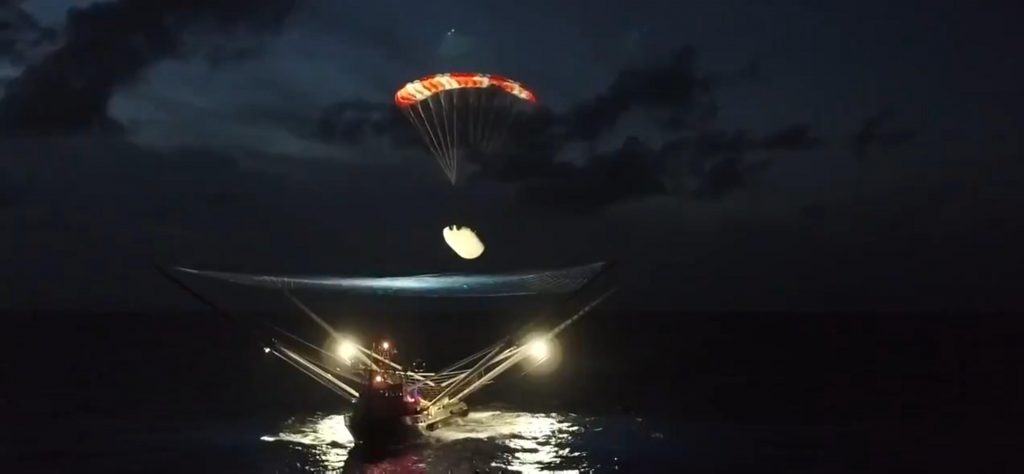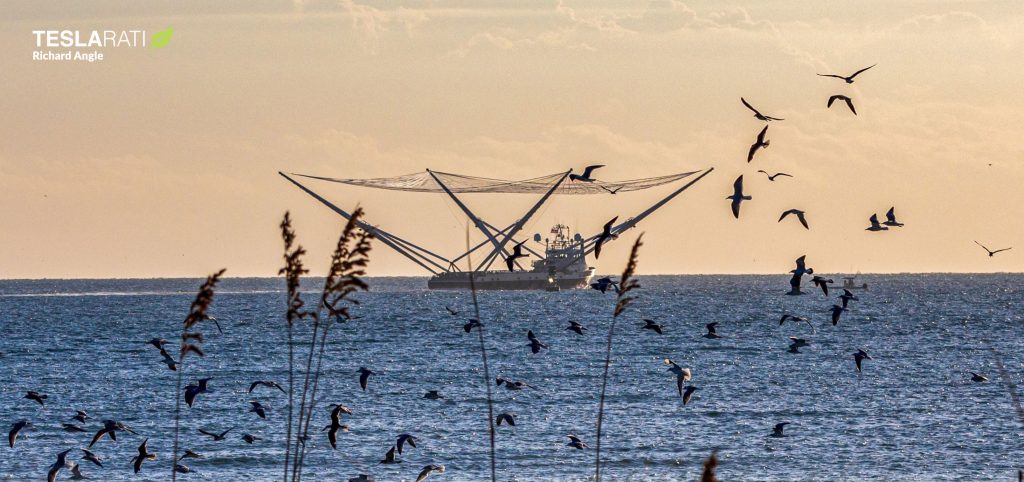

News
SpaceX recovery ships head to sea for first 'whole-fairing' catch attempt
After a brisk day-long cruise into the Atlantic Ocean, SpaceX’s twin Falcon fairing recovery ships have reached the general landing area to prepare for their first true ‘whole-fairing’ catch attempt.
Formerly known as Mr. Steven, GO Ms. Tree and new sister ship GO Ms. Chief departed Port Canaveral on December 14th and arrived at their designated recovery roughly 36 hours later. Now stationed just shy of 800 km (500 mi) downrange of SpaceX’s LC-40 Cape Canaveral Air Force Station (CCAFS) launch site, the ships are in position and can begin to prepare for Falcon 9’s Kacific-1/JCSAT-18 launch.
Scheduled to lift off no earlier than (NET) 7:10 pm ET, December 16th (00:10 UTC, Dec 17), Falcon 9 will place the ~6800 kg (15,000 lb) Kacific-1/JCSAT-18 communications satellite in a geostationary transfer orbit (GTO). Falcon 9 booster B1056 will attempt its third landing around nine minutes after launch, to be followed 25 minutes later by satellite deployment from the rocket’s upper stage. deploying the satellite around thirty minutes after launch.
If all goes according to plan, another 12-15 minutes after Falcon 9’s second stage (S2) deploys the Kacific-1/JCSAT-18 satellite, the rocket’s payload fairing halves will begin their final approach towards recovery ships Ms. Tree and Ms. Chief. Just shy of identical twins, the two ships have been outfitted with custom arms, boom supports, and nets with the intention of quite literally catching payload fairing halves out of the air after orbital Falcon 9 (and Heavy) launches.
SpaceX’s fairing recovery development program has had a long and arduous journey from Mr. Steven’s (now Ms. Tree’s) arrival at the company’s Port of Los Angeles dock space (late-2017) to the ship’s first attempted fairing catch (February 2018) and first successful catch (June 2019). In the 20+ months SpaceX has been attempting fairing recoveries, at least a dozen intentional soft ocean landings and seven net catches have been attempted, with numerous successful splashdowns and recoveries ultimately followed by two consecutive catches in June and August 2019.


The fact that SpaceX consecutively caught two fairing halves a little over two months apart after five failed catch attempts suggests that the company has effectively solved the majority of the fairing recovery challenge, becoming the first company (or space agency) in the world to do so. Unfortunately, a three-month launch lull after the second successful catch precluded any rapid-fire follow-up attempts and when that lull came to an end on November 11th, Ms. Tree and Ms. Chief were both ready but were forced to abort the attempt by rough seas.
Both ships actually spent several weeks docked (or stranded) in a North Carolina port after that aborted mission, potentially indicating that SpaceX had to fly a team north to inspect both ships’ arms and ensure that they could make the journey back to Port Canaveral. They were ultimately cleared and returned to their home port around ten days later, where their arms and booms were immediately removed. It’s unclear why that removal occurred but SpaceX’s recovery team rapidly reinstalled their arms in just a few days, followed by their nets soon after.
Given that their first simultaneous (i.e. ‘whole-fairing’) catch attempt was aborted before it could start, it’s safe to say that December 16th’s hopeful attempt will be Ms. Tree’s and Ms. Chief’s first side-by-side recovery mission. Both ships have successfully reached the recovery zone, a step further than they managed to get on their November attempt. Coincidentally, that November launch happened to mark both SpaceX’s and the world’s first launch of a flight-proven payload fairing, both halves of which were recovered from the ocean and represented a more or less worst-case scenario for reuse.
And nevertheless, that reuse was a flawless success, marred only by the fact that Ms. Tree and Ms. Chief were unable to attempt to recover the world’s first twice-flown payload fairing. In short, all the conditions are right for what could be the world’s first successful recovery of both halves of an orbital-class payload fairing. If successful, SpaceX will have effectively closed the book on Falcon 9 and Heavy reusability development, having proven that both boosters and fairings can be reliably and routinely recovered and reused.
Check out Teslarati’s Marketplace! We offer Tesla accessories, including for the Tesla Cybertruck and Tesla Model 3.

News
Tesla FSD fleet is nearing 7 billion total miles, including 2.5 billion city miles
As can be seen on Tesla’s official FSD webpage, vehicles equipped with the system have now navigated over 6.99 billion miles.

Tesla’s Full Self-Driving (Supervised) fleet is closing in on almost 7 billion total miles driven, as per data posted by the company on its official FSD webpage.
These figures hint at the massive scale of data fueling Tesla’s rapid FSD improvements, which have been quite notable as of late.
FSD mileage milestones
As can be seen on Tesla’s official FSD webpage, vehicles equipped with the system have now navigated over 6.99 billion miles. Tesla owner and avid FSD tester Whole Mars Catalog also shared a screenshot indicating that from the nearly 7 billion miles traveled by the FSD fleet, more than 2.5 billion miles were driven inside cities.
City miles are particularly valuable for complex urban scenarios like unprotected turns, pedestrian interactions, and traffic lights. This is also the difference-maker for FSD, as only complex solutions, such as Waymo’s self-driving taxis, operate similarly on inner-city streets. And even then, incidents such as the San Francisco blackouts have proven challenging for sensor-rich vehicles like Waymos.
Tesla’s data edge
Tesla has a number of advantages in the autonomous vehicle sector, one of which is the size of its fleet and the number of vehicles training FSD on real-world roads. Tesla’s nearly 7 billion FSD miles then allow the company to roll out updates that make its vehicles behave like they are being driven by experienced drivers, even if they are operating on their own.
So notable are Tesla’s improvements to FSD that NVIDIA Director of Robotics Jim Fan, after experiencing FSD v14, noted that the system is the first AI that passes what he described as a “Physical Turing Test.”
“Despite knowing exactly how robot learning works, I still find it magical watching the steering wheel turn by itself. First it feels surreal, next it becomes routine. Then, like the smartphone, taking it away actively hurts. This is how humanity gets rewired and glued to god-like technologies,” Fan wrote in a post on X.
News
Tesla starts showing how FSD will change lives in Europe
Local officials tested the system on narrow country roads and were impressed by FSD’s smooth, human-like driving, with some calling the service a game-changer for everyday life in areas that are far from urban centers.

Tesla has launched Europe’s first public shuttle service using Full Self-Driving (Supervised) in the rural Eifelkreis Bitburg-Prüm region of Germany, demonstrating how the technology can restore independence and mobility for people who struggle with limited transport options.
Local officials tested the system on narrow country roads and were impressed by FSD’s smooth, human-like driving, with some calling the service a game-changer for everyday life in areas that are far from urban centers.
Officials see real impact on rural residents
Arzfeld Mayor Johannes Kuhl and District Administrator Andreas Kruppert personally tested the Tesla shuttle service. This allowed them to see just how well FSD navigated winding lanes and rural roads confidently. Kruppert said, “Autonomous driving sounds like science fiction to many, but we simply see here that it works totally well in rural regions too.” Kuhl, for his part, also noted that FSD “feels like a very experienced driver.”
The pilot complements the area’s “Citizen Bus” program, which provides on-demand rides for elderly residents who can no longer drive themselves. Tesla Europe shared a video of a demonstration of the service, highlighting how FSD gives people their freedom back, even in places where public transport is not as prevalent.
What the Ministry for Economic Affairs and Transport says
Rhineland-Palatinate’s Minister Daniela Schmitt supported the project, praising the collaboration that made this “first of its kind in Europe” possible. As per the ministry, the rural rollout for the service shows FSD’s potential beyond major cities, and it delivers tangible benefits like grocery runs, doctor visits, and social connections for isolated residents.
“Reliable and flexible mobility is especially vital in rural areas. With the launch of a shuttle service using self-driving vehicles (FSD supervised) by Tesla in the Eifelkreis Bitburg-Prüm, an innovative pilot project is now getting underway that complements local community bus services. It is the first project of its kind in Europe.
“The result is a real gain for rural mobility: greater accessibility, more flexibility and tangible benefits for everyday life. A strong signal for innovation, cooperation and future-oriented mobility beyond urban centers,” the ministry wrote in a LinkedIn post.
News
Tesla China quietly posts Robotaxi-related job listing
Tesla China is currently seeking a Low Voltage Electrical Engineer to work on circuit board design for the company’s autonomous vehicles.

Tesla has posted a new job listing in Shanghai explicitly tied to its Robotaxi program, fueling speculation that the company is preparing to launch its dedicated autonomous ride-hailing service in China.
As noted in the listing, Tesla China is currently seeking a Low Voltage Electrical Engineer to work on circuit board design for the company’s autonomous vehicles.
Robotaxi-specific role
The listing, which was shared on social media platform X by industry watcher @tslaming, suggested that Tesla China is looking to fill the role urgently. The job listing itself specifically mentions that the person hired for the role will be working on the Low Voltage Hardware team, which would design the circuit boards that would serve as the nervous system of the Robotaxi.
Key tasks for the role, as indicated in the job listing, include collaboration with PCB layout, firmware, mechanical, program management, and validation teams, among other responsibilities. The role is based in Shanghai.
China Robotaxi launch
China represents a massive potential market for robotaxis, with its dense urban centers and supportive policies in select cities. Tesla has limited permission to roll out FSD in the country, though despite this, its vehicles have been hailed as among the best in the market when it comes to autonomous features. So far, at least, it appears that China supports Tesla’s FSD and Robotaxi rollout.
This was hinted at in November, when Tesla brought the Cybercab to the 8th China International Import Expo (CIIE) in Shanghai, marking the first time that the autonomous two-seater was brought to the Asia-Pacific region. The vehicle, despite not having a release date in China, received a significant amount of interest among the event’s attendees.








